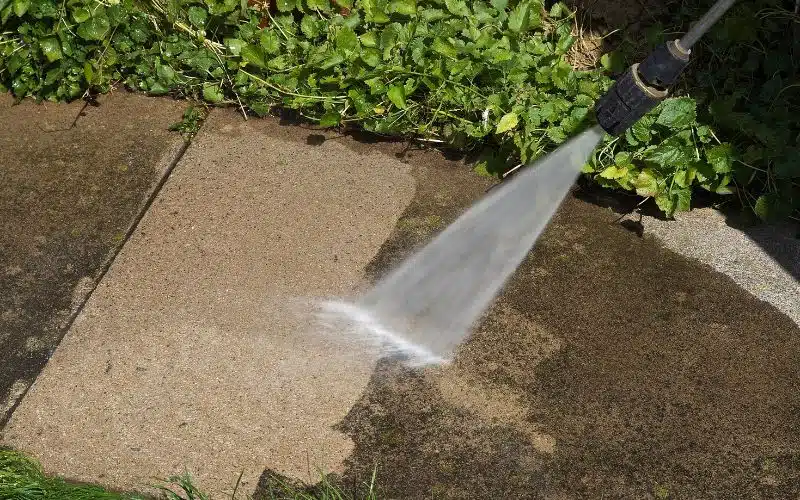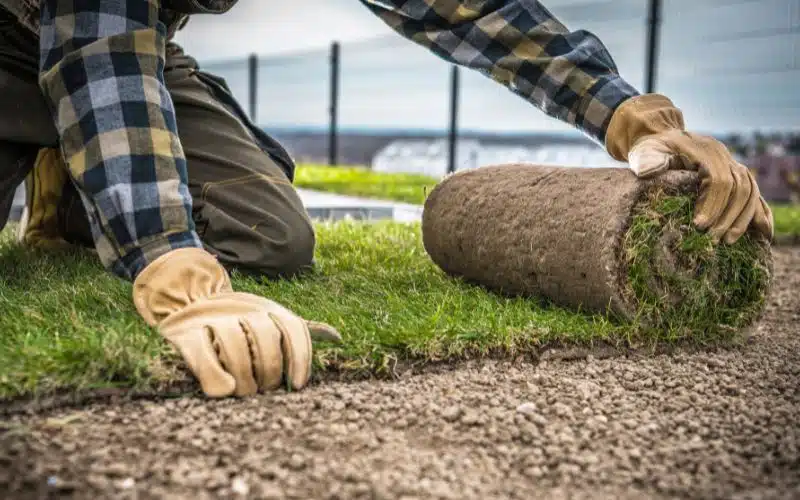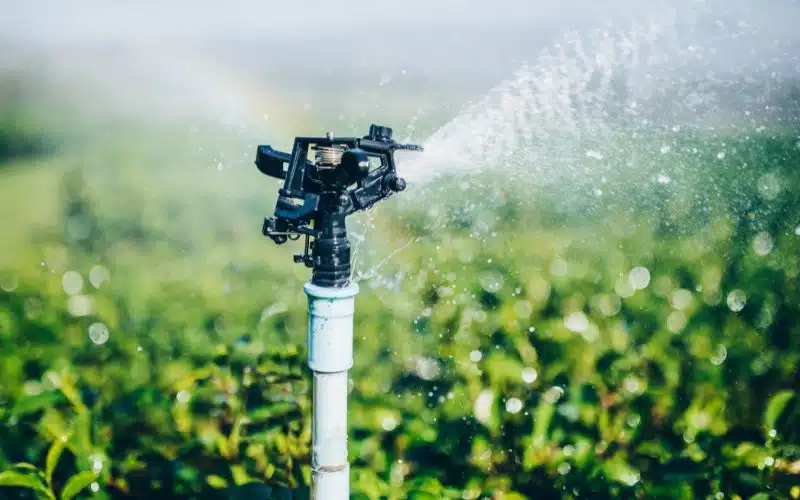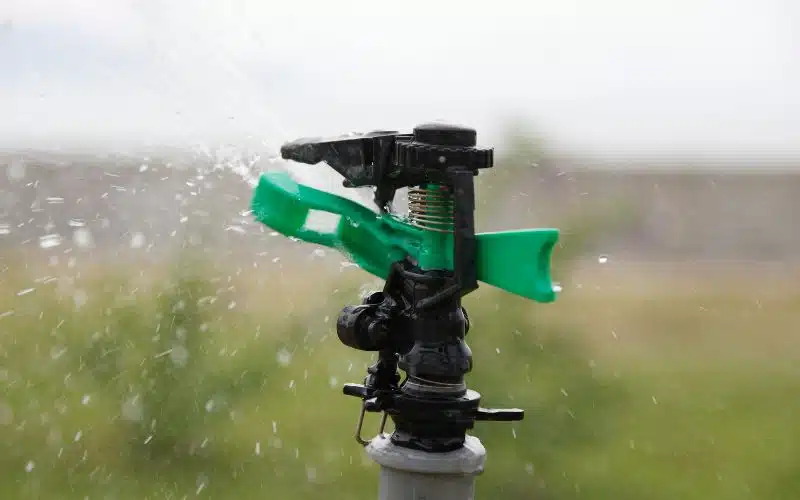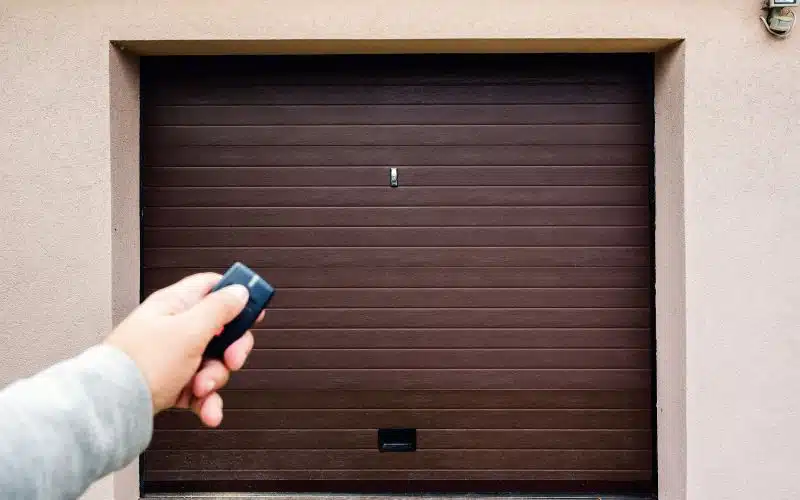Water supply failures can be overwhelming and frustrating. And there is no doubt that when this happens, the first thing you consider wrong is the bleed screw.
But, what is the function of your blessed screw? As we progress in this article, you will know the relationship between the bleed screw and the sprinkler valve.
The bleed screw is responsible for the release and flow of water. And this is because whenever you open the manual bleed screws, water begins to flow into the valve box as long as the valve is open. Meanwhile, the models with the external bleed valve have a knob that allows water out after turning the solenoid ¼ counterclockwise.
Why Does My Sprinkler Valve Only Work With a Bleed Screw?
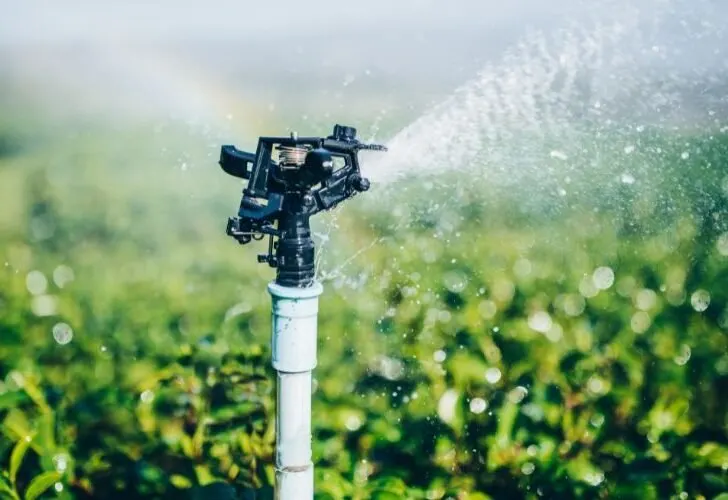
For many reasons, your sprinkler valve only working with a bleed screw can arise.
Also, not being in person poses a challenge in pinpointing where the error is coming from. Many factors may be responsible for this, and below are a few of them:
#1. Clogged Solenoid Exhaust Ports
From the upper valve chamber to the solenoid, there is an entry port; from the solenoid to the exhaust port downstream of the valve.
Once the port becomes clogged, the valve may open partially or may not even open at all. But, if you face this challenge, the steps below will help you address the issue;
- Use the external bleed screw to turn on the valve. If it turns on, then the problem is related to the port.
- You are most likely to end up with an injury if you turn the valve under pressure, so make sure you turn off the water from the main supply.
- Take out the captive bolts that you will find on top of the valve bonnet.
- Take out the Bonnet, Spring, Diaphragm, and Support Ring.
- To clean out all leftover dirt and debris, insert an 18 AWG station wire through the exhaust port.
- Bring the Bonnet, Spring, Diaphragm, and Support Ring back to position.
- To ensure the work you poured your energy into is successful, manually activate the valve from the control.
#2. Faulty Diaphragm
The diaphragm is a small tube that acts as a gasket that runs from the solenoid to the diaphragm. Or from the solenoid down through the bonnet and the body.
You need to change the diaphragm because the rubber tube (diaphragm) could collapse due to the port’s deformation on the body.
#3. Bad Venting Port
You will have to change the body if the problem is related to the venting port.
You must change it because the entire area works when you turn on the bleed screw. And so when you get an excellent valve, all your worries will be fine.
When Should I Bleed My Sprinklers?
During winter, you should bleed or winterize your sprinklers immediately when the temperature falls below 32 degrees Fahrenheit. At this period, your sprinkler system falls at risk of freezing.
It usually begins with pipes cracking that become exposed to the weather or pressure build-up at the sprinkler head, generating many more problems.
However, below are three steps you can follow bleeding your sprinklers;
#1. Step 1– Cut Off Water Supply
Protecting your sprinkler from the freezing temperature is vital, so cut off the water supply during the seasonal change from winter to spring.
The best way to do this is to engage the shutoff valve to the irrigation system of your sprinkler.
You can find the valve where your main water meter is. And more to it is that you can identify it with the orange and spring green tag. And this is but the first step to protecting your sprinkler.
#2. Step 2– Ensure Booster Pump is Unplugged
If you use a booster pump, I will advise you to unplug it. You will find it on the ground with the cord running into the outlet box. So you can unplug it from the wall outlet or the box itself.
#3. Step 3– Turn On the Sprinkler
The reason for doing so is to release the pressure on the system. Turn on any part of the sprinkler for a few minutes, and whether the water comes out doesn’t matter.
And this is because the point is to release the mainline’s pressure. Unplug the controller and timer as soon as you finish.
What Happens If My Sprinkler Valve Bleed Screw Breaks Off?
If the sprinkler valve bleed screw breaks off, it will fall into the sprinkler valve, remain stuck in there, and obstruct water flow.
When this happens, you over-tightened the screw and end up breaking the head off the screw. Nevertheless, you can still retrieve the broken piece of the screw stuck in the valve.
But there are so many uncertainties in doing it; for instance, you may wonder if you can pull it off without damaging the valve or another essential part.
Below are three ways to go about the challenge;
- You can drill a hole and use a small screw extractor to remove the piece of the screw. This task entails carefulness and delicate hands because a slight mess-up of the thread will cause leaking of the new screw.
- You may also decide to replace your valve’s bonnet or the whole valve. You may also decide to change all the whole parts rather than buy a new one.
- The third option can be to ignore the piece of screw there and keep using the system like that. The only challenge is that you will not be able to control it manually with the bleed screw.
How to Replace a Sprinkler Valve Bleed Screw?
To replace the sprinkler valve, you need some basic plumbing supplies, and no doubt some areas of it call for experience.
The critical aspect of the entire work is to get a fitting replacement for the valve. And this involves identifying the right type and size of valve with the correct PVC adapters and sockets.
But before you begin, cut off all water supply by rotating the valve handle in the main supply pipe. And once you have finished closing the valve, gather all that is on this tables list;
| Tools | Materials |
|---|---|
| PVC pipe cutter | 2 or more PVC MIP adapter |
| Camera | PVC primer and solvent glue |
| Tongue-and-groove pliers | New sprinkler valve |
| Utility knife | Thread-seal tape |
And below are the five steps you need to follow to replace the sprinkler valve successfully:
#1. Step 1– Disconnect Wire
First, identify where the low-voltage wire connects with the old sprinkler valve. This knowledge is essential because you make the same connection when replacing the new valve.
And this is where your camera comes in handy, and you will first take a picture of the entire wiring before you begin to disconnect it.
#2. Step 2– Take the Old Valves Away
Cut your PVC pipe very close to the PVC adapter using your PVC pipe cutter. Since you will be working on preserving as much length as possible, make sure you cut very close to the old fittings.
And the new one will be just a little lower than the older ones.
#3. Step 3– Set Up the New Valve
Attach the new male PVC adapter to the new sprinkler valve but ensure to wrap the plumber’s tape on the threaded end of the valve socket.
Then use the tongue-and-groove pliers to tighten the adapter but do not over-tighten them; otherwise, the plastic part will break.
#4. Step 4– Attach New Valve
Make sure you pour the PVC primer and solvent glue into the female adapter sockets and at the outer pipe end.
And then, attach the new valves to the pipes and push them down until it is well seated into the adapter socket.
And before you carry out any test, ensure that you give the PVC glue at least two hours to dry up.
#5. Step 5– Reconnect Wires and Test
Take out your camera and follow the same way to connect the new valve, just as you could see it at the beginning. Then turn on the water supply, the valve, and all the connections for a leak.
Ten Best Sprinkler Valve Bleed Screw
The following are the best ten bleed screws, and I will name them by the sprinkler valve they come with;
- Orbit Inline Sprinkler Valve
- HFS (R) 12v DC Electric Solenoid Valve
- Irritrol 2400T Globe NPT Threaded Connection, 1″
- Rain Bird DASASVF075 Professional Grade Anti-Siphon Valve
- Rain Bird CP100 In-Line Automatic Sprinkler Valve
- Orbit 57253 3-Valve Heavy Duty Preassembled Manifold
- Orbit Sprinkler System 3/4-Inch Brass Anti-Siphon Control Valve 51016
- HUNTER Sprinkler PGV101G PGV Series 1-Inch Globe Valve with Flow Control
- Toro 53763 3/4-Inch Anti-Siphon Jar Top Underground Sprinkler System Valve
- K-RAIN 4404 4000 Series Indexing Valve with 4 Outlets and 4 Zones
Conclusion
The bleed screw is responsible for the trees and water flow into the valve box. So it would be best to bleed your sprinklers immediately when the temperature falls below 32 degrees Fahrenheit.
And when the bleed screw breaks, it falls into the valve and obstructs water flow, and with the five steps above, you can replace the sprinkler valve.
